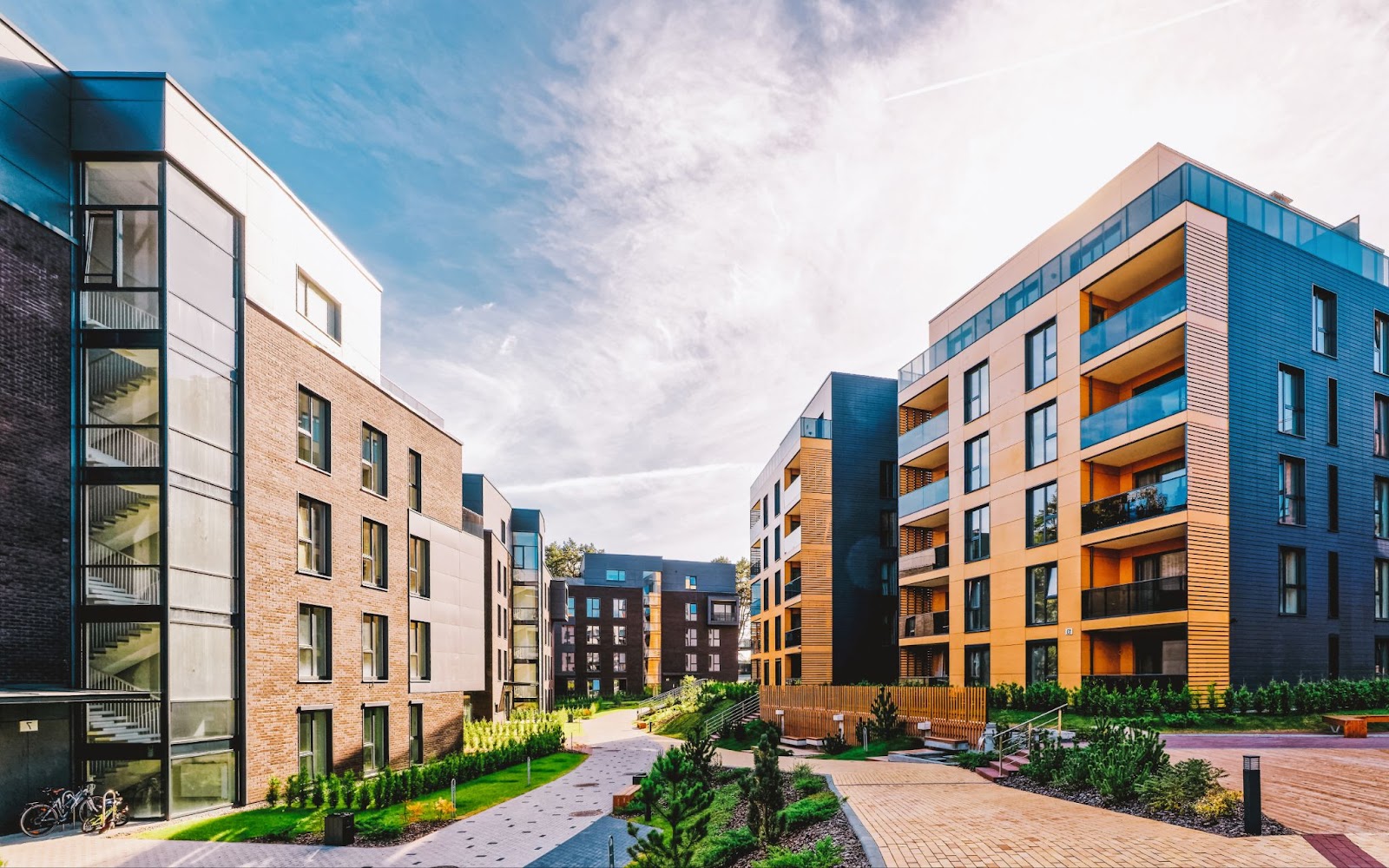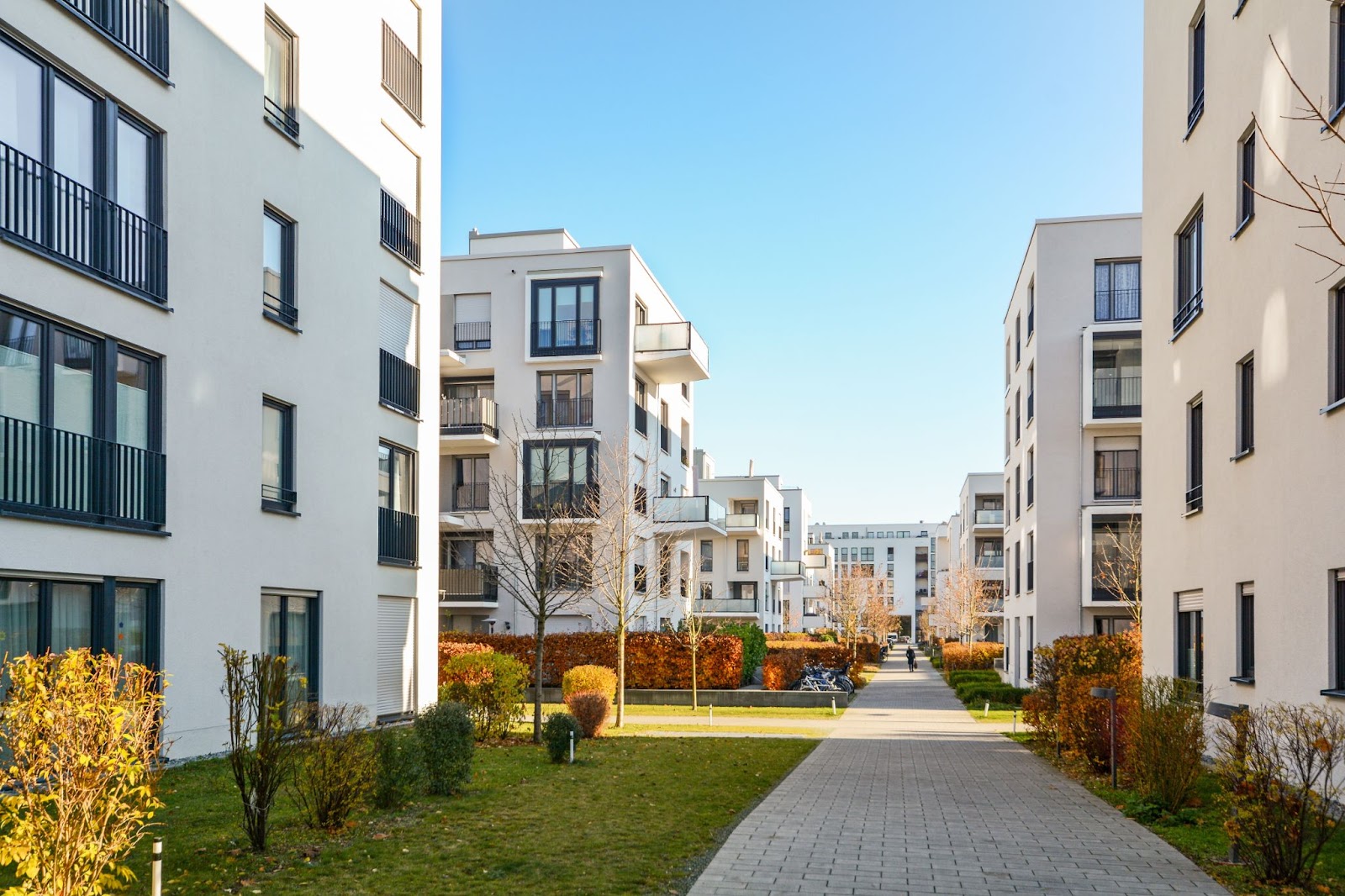Sustainability in commercial construction is all about building in a way that helps our planet and our communities. When we talk about sustainability, we mean creating structures that are good for the environment, safe for people and work well for many years to come.
Let’s break down what this means for commercial builders, commercial contractors, and the projects they work on.
Caring for our planet
One of the main goals of sustainable commercial construction is to care for our planet. This means using materials that do not harm the Earth.
For instance, commercial builders can choose recyclable materials or those made from renewable resources, like bamboo or reclaimed wood. These materials are better for the environment because they reduce waste and use less energy to produce.
In addition, sustainable buildings are designed to use less energy. Commercial contractors can install energy-efficient systems, like solar panels and LED lighting. These systems help businesses save money on energy bills and reduce the amount of fossil fuels used, which is great for the planet.
Building for people
Sustainability also means making buildings safe and comfortable for people. A sustainable structure should create a healthy environment.
For example, it should have good air quality, plenty of natural light, and be designed to reduce noise. By focusing on the well-being of the people who work and live in these buildings, commercial contractors contribute to happier and healthier communities.
Sustainable buildings are also designed to be accessible. This means making sure everyone, including people with disabilities, can easily use and enjoy the space. This thoughtful approach shows that commercial builders care about all members of the community.
Long-lasting structures
Another important aspect of sustainability is durability. A sustainable building should be designed to last a long time. This means that commercial builders need to think about quality materials and construction methods that can withstand the test of time.
When buildings are made well, they need fewer repairs and renovations, which saves money and reduces waste in the long run.
In addition, a long-lasting building adapts to changes over time. This flexibility means that as businesses grow or change their needs, construction builders can modify the building without needing to start all over. This approach not only helps save resources but also supports businesses as they evolve.
Protecting natural resources
Sustainable commercial construction also focuses on protecting our natural resources. This means managing water usage wisely. For example, commercial contractors can install systems that collect rainwater for use in landscaping or toilets. They can also choose drought-resistant plants for landscaping, which helps save water.
Using local materials is another great way to support sustainability. When commercial builders use materials that come from nearby, they reduce the energy spent on transportation. This helps keep the environment clean and supports local economies.
Involving the community
Finally, sustainability in commercial construction is not merely about the structures themselves. It also involves the community. Builders and contractors should engage with local communities to understand their needs and desires. By listening and involving local people in the planning process, commercial builders create spaces that truly benefit everyone.
A sustainable approach to commercial construction is about looking ahead. It means thinking about how our buildings, resources, and communities are able to coexist for many years to come. By focusing on sustainability, commercial builders and contractors are not merely constructing buildings; they are building a brighter future for us all.

Strategies for building resilient structures
1. Smart design choices
One of the first steps to building resilient structures is design. Commercial builders need to consider carefully how the building will look and work.
When commercial contractors choose materials, it’s important to pick strong ones. Steel, concrete, and treated wood help a building resist the forces of nature. These materials can also last a long time, which is great for the environment.
Builders should consider the building’s location. If the area is prone to earthquakes, flooding, or hurricanes, the design should be ready. Elevating buildings above flood levels or designing flexible structures will help keep them safe.
2. Sustainable building materials
Another key strategy is using eco-friendly materials. By choosing materials that are good for our planet, commercial construction becomes more sustainable.
Commercial builders reduce waste by using recycled materials. This means taking old buildings apart and using their materials in new projects. It saves energy and is great for reducing landfill waste.
Using materials from nearby locations also helps. It cuts down on transportation costs and pollution. Plus, local materials often better match the environment, making buildings look nice.
3. Energy efficiency
A resilient building is also energy-efficient. This means it uses less energy and creates a smaller carbon footprint.
Adding solar panels and energy-efficient windows can help. Solar panels collect sunlight, turning it into power for the building. Energy-efficient windows keep the heat in during winter and out during summer, making the building comfortable while using less energy.
Proper insulation is also vital. Insulation helps keep buildings warm in the winter and cool in the summer, saving energy and money.
4. Water management
Managing water is another vital part of creating resilient structures. Water can be both a friend and a foe. It helps our plants grow, but too much water causes big problems.
One good strategy is to collect rainwater. It’s possible to design commercial buildings with systems to capture rainwater and then use that water for toilets or watering plants, saving fresh water for other needs.
A building must also have a good drainage system. If water can’t escape properly, it can cause damage. Builders should design drainage systems that can handle lots of rain, keeping the building safe and dry.
5. Embracing technology
Technology plays a huge role in resilience. Using new technology helps commercial contractors to build better.
A Building Information Modeling (BIM) system is a special computer technology that helps contractors plan and visualize the project before it starts. By seeing the whole project in advance, builders can spot potential issues and make better choices, saving time and money.
Using smart sensors makes buildings safer and more efficient. These sensors monitor everything from temperature to humidity. If something goes wrong, alerts are sent out immediately, allowing for quick action.
6. Community and health
A resilient building is also one that cares about its occupants and the surrounding community. It should be a place where people feel safe and happy.
Commercial construction should include areas where people are able to gather, like parks or community areas. They help foster connections and strengthen neighborhoods.
The air quality inside a building is also very important. Builders should use materials that do not release harmful chemicals, and good ventilation systems will keep the air fresh and healthy.
The role of policy and regulation
Policies are the guidelines we follow, while regulations are the laws that we must obey. In commercial construction, these rules tell commercial contractors how to build safely and efficiently while also protecting the environment. They include rules about using certain materials, saving energy, and even using designs that work well with the weather.
Creating safe buildings
For commercial builders, it’s essential to understand local building codes, which are a type of regulation. Each city or state has its own set of codes, which are designed to ensure that people won’t get hurt while they are inside a store or office building.
Working with local governments
Commercial builders sometimes have to work closely with local governments to follow the right rules. Governments often create policies that support sustainable building practices. For example, they might give tax breaks or incentives to builders who use green materials or create energy-efficient designs.
When policies are in place, builders can follow them to ensure their projects are successful and beneficial to the community. It is a win-win situation: The builders get rewarded for their efforts, and the community gets sturdy, eco-friendly buildings.
Meeting community needs
Another important role of policies and regulations in commercial construction is community input. Many places want to make sure that new buildings fit well with their surroundings. Local governments often ask people in the community what they want or need. This helps builders create structures that support the local residents’ needs.
Keeping up with technology
Technology is always changing, and some policies help keep up with new ideas. As commercial builders learn about new materials or technologies that help reduce energy use, regulations have a chance to catch up to support those innovations.
For instance, if a new building material is discovered that is both strong and light but also environmentally friendly, regulations may soon change to allow commercial contractors to use it.
This agility keeps our buildings modern and helps create strong and sustainable structures. Builders have the chance to use the latest tools to make the best buildings possible.
Build with LWG Construction
Ready to elevate your next project with sustainability and resilience at the forefront? Trust LWG Construction for all your commercial construction needs. With a commitment to building eco-friendly, durable structures, we ensure that your investment stands the test of time while minimizing environmental impact.
Partner with us to create commercial spaces that are both forward-thinking and built to last. Contact LWG Construction today, and let’s build a better future together!
